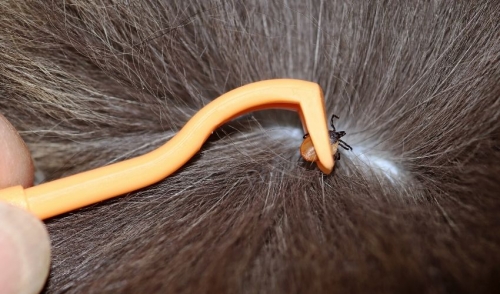Shop Local This Holiday Season
Whether you need to purchase gifts, greeting cards, dinner fixin's, baked goods, twinkle lights, decorations or even just some extra chairs, a new welcome mat,...

Ticks can be bothersome, even dangerous, pests, but you can easily remove them if your pet does pick one up. Removing ticks safely and easily can help keep your pet comfortable and healthy, even if ticks are a nuisance.
Ticks are eight-legged parasites that bite through the skin and feed on the blood of their host. As a tick feeds, its body will swell dramatically, and one tick may stay on a host 5-14 days until it is fully engorged. Once finished feeding, the tick will naturally drop off.
Several species of ticks are common in North America, including deer ticks, dog ticks, and lone star ticks. These insects are most common in warmer climates, though they are seasonally active during the warmest months in nearly every region.
While the blood loss from a feeding tick won’t be noticed by most pets, these parasites can carry a range of dangerous diseases including lyme disease, anaplasmosis, kidney disease, and Rocky Mountain spotted fever. Any outdoor pets – dogs, cats, rabbits, etc. – are susceptible to tick bites, and could develop symptoms such as skin irritation and rashes, itching, joint pain, lameness, fever, lethargy, vomiting, and anemia. If left untreated, the diseases ticks carry can easily be fatal to pets.
It is important for pet owners to realize that the diseases ticks carry can also infect humans. Any contact with the tick, its mouthparts, or infected blood can transmit these diseases. Therefore, it is imperative to remove ticks properly and safely to protect not only your pet, but yourself as well.
Removing ticks is not difficult but it does take care to be sure they are removed safely and completely, without causing further contamination or contagion. To remove a tick, you will need:
As soon as you find a tick, it should be removed. Do not wait for the tick to become larger in order to see or grasp it more easily, as ticks can transmit diseases to your pet in as little as 3-4 hours after biting. Instead, you should remove ticks immediately. To do so:
If you find a tick on your pet but aren’t comfortable with removing it yourself, take your pet to the veterinarian for assistance. Your vet or a vet technician can remove the tick, showing you how to do so safely and easily so you are prepared for any future ticks.
Because ticks can be dangerous to both pets and humans, it is wise to take steps to minimize the risk of ticks attaching themselves to your pet. There are easy ways to you can keep ticks away, including…
Always be sure to check your pet for ticks after the animal has been outside. Check around their eyes and ears, between toes, around the tail, under the collar, and in areas of thinner fur between the hind legs and under the front legs, as these are areas where ticks are most likely to attach. Once you know how to remove a tick from your pet safely and easily, you can be prepared to eliminate any of these pests you may find.

Contains 10 Individually Wrapped High Energy Suet Plus Cakes.
On Sale: $12.88
Reg. Price: $19.99
Not valid with any other discounts or sales.
We currently do not have any events scheduled.

Whether you need to purchase gifts, greeting cards, dinner fixin's, baked goods, twinkle lights, decorations or even just some extra chairs, a new welcome mat,...
Comments